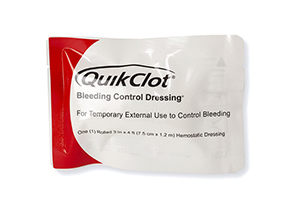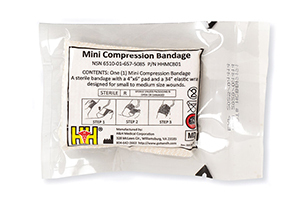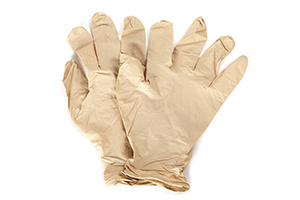Sep 6th 2021
BLOOD LOSS
What Happens When Blood Loss Occurs
Always Better. | September 7th 2021
Blood loss. Spoiler Alert! It’s bad for you. Several of the previous posts have talked about stopping blood loss, I guess it’s time to spend a few minutes on WHAT HAPPENS when blood loss occurs. I have spent too many hours of my life sitting in a classroom listening to doctors with 6# brains (the average human brain weighs 3#) and eleven letters behind their name explain to me in scientific detail the physiological aspects of blood loss. This isn’t that. In keeping with the original intent of the BFG MED BLOG, I want to tell you what you need to know, and why, in the plainest language possible. So let’s do this.
Initially, you should understand that bleeding occurs only when an artery, vein, organ or capillaries are cut or damaged. People have the impression that any damage to the outer skin automatically results in bleeding. The example I use is the visual of sticking a pin in a water balloon and water flowing out. That isn’t how it works. We aren’t a big bag of blood. I have seen plenty of major wounds that didn’t result in significant bleeding. So the rule of thumb we should use, as covered in the last post “Tourniquet Placement”, is that you have to make an immediate judgement call based on the situation, type of injury, patient condition, tactical scenario and visual indicators. If you look at the wound and think “SH*T! This person is going to die from this!” then it is Life Threatening Bleeding and should be addressed as such. Nothing in this post should change the use of that rule.
Hopefully, the following information will help you in making that determination and understanding the threats the patient faces. Especially in instances in which you don’t initially think the situation is that serious and then facts present themselves causing you to reassess.
And here’s the kicker, the secondary purpose of this post is to educate you that all blood loss isn’t necessarily a death sentence. While I have pounded the table and yelled about how bad blood loss is and how you must act quickly and decisively to stop it, I also don’t want you or the patient to see blood on the ground and think “this person is a goner.” I place great weight in the mental attitude of a patient having a direct correlation to their survivability. There are plenty of stories out there of people who “just refused to die.” This is why I always counsel new medics to never stand over a patient, especially one who appears unconscious, and say something like “Man! That guy (gal) is messed up!”
We are going to be discussing blood loss in Liters. I am old enough to have been in school when they tried to convert us to the Metric System and I am pretty sure it was all a Communist plot to bedazzle my ten-year-old mind. Luckily the Imperial System (you didn’t know it was called that did you?) won out but some of the Metric stuff stuck with me for later in life when I got involved in medicine. As it so happens, water bottles come in 1-liter sizes which will prove useful for the following graphics and your upcoming Homework Assignment.
5.0 LITERS OF BLOOD - The AVERAGE human has five liters of blood in the body.
If you are a barrel-chested American Freedom Fighter or a friendly Hobbit you may have a bit more or less. But we will use the average of FIVE LITERS as a basis for discussion.
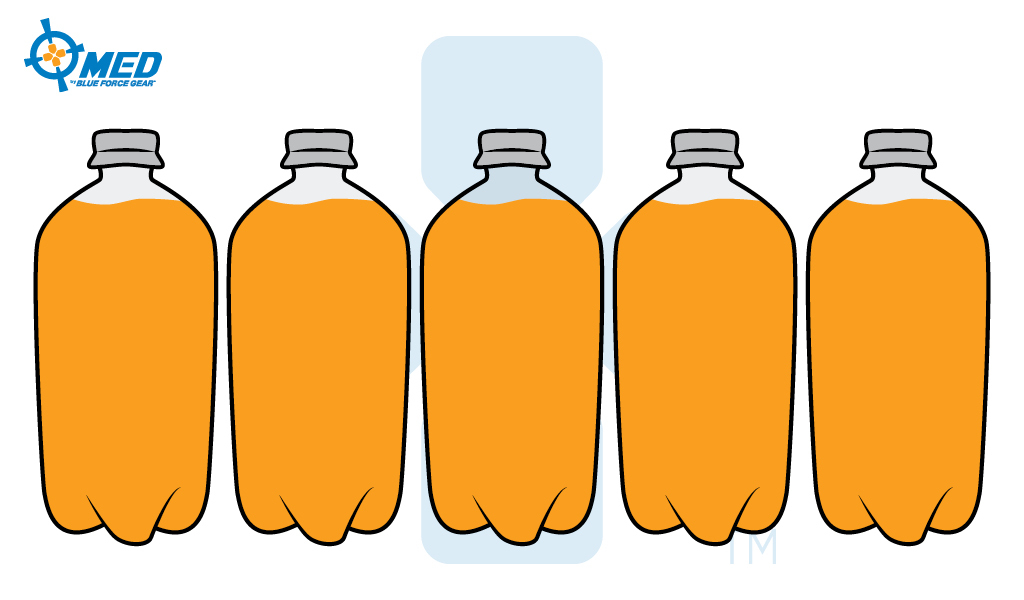
FIVE LITERS OF BLOOD – NO BLOOD LOSS
4.5 LITERS OF BLOOD – A half-liter blood loss
A half-liter blood loss, basically a pint, doesn’t sound like a lot until it is your blood and you see it on the ground. In reality, your body is fully capable of compensating for this amount of blood loss. After all, people go down and donate a pint all the time and the only treatment is some orange juice and a cookie. This goes back to my point about not freaking out, or scaring your patient, just because you see this amount of blood loss. A patient will be fully alert with a normal or slightly elevated pulse and a normal rate of breathing after the loss of a half-liter of blood.*
*Remember that we are talking about the physical effects of blood loss here. In reality, anyone suffering from a traumatic wound and blood loss is going to be breathing a little faster with a rapid heart rate due to the scenario.
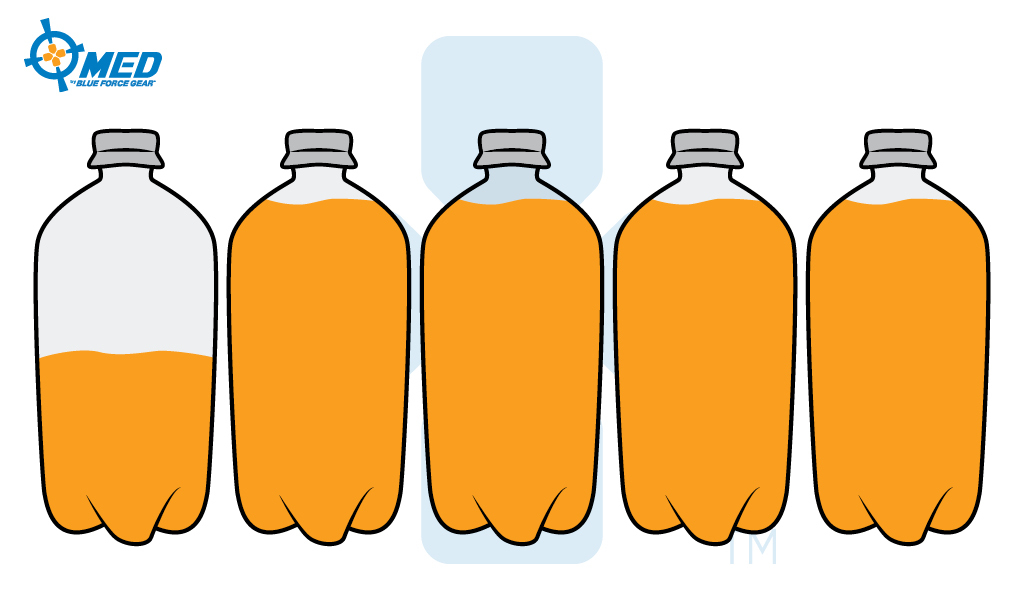
4.5 LITERS OF BLOOD – 0.5L DOWN – NOT A BIG DEAL (Unless it’s your blood)
4.0 LITERS OF BLOOD – Whoa!
One liter down, that’s 20% of your blood volume. Certainly this patient is doomed? Actually… NO. Even after losing a full liter of blood, this patient will be fully alert with an elevated heart rate and slightly rapid / rapid breathing. This patient can best be helped by stopping the bleeding, laying them down and keeping them warm. No one is going to die from this amount of blood loss.

4.0 LITERS OF BLOOD – 1.0L DOWN (20%) – STILL NOT THAT BIG OF A DEAL
3.5 LITERS OF BLOOD – As the saying goes, “It’s getting real.”
There is a liter and a half of blood on the ground. This patient will be alert but anxious, their heart rate will be elevated (100 ) with rapid breathing. Their body is compensating for the blood loss by pumping what is left faster and providing it increased oxygen levels through faster breathing. This patient is still quite likely to survive. A BIG FACTOR here is the cardiovascular fitness of the patient. From this point forward, the body’s ability to compensate for the blood loss will determine survivability. Big gym muscles are great but this is where cardio saves the day. I used to tell my guys, you don’t have to be a marathon runner but a half hour three or four times a week will absolutely save your life in a trauma scenario. End of Public Service Announcement.

3.5 LITERS OF BLOOD – 1.5L DOWN (30%) – TIME FOR THAT CARDIO TO PAY OFF
3.0 LITERS OF BLOOD – Two liters of blood loss
Two liters of blood loss, that’s an entire Diet Coke bottle. This patient will be confused, weak and will probably lay down if they haven’t already. Laying flat is the body’s method of helping get blood to the all-important brain. It’s much easier to get blood to the head if it is on level with the heart. This patient will have a rapid pulse rate likely more than 120 beats per minute and will be breathing at a rate of 35 or more. The patient COULD die from this. Again, the cardio comes into play and also your treatment of the patient. Please go back and read the HYPOTHERMIA blog post if you don’t remember it. You need to treat this patient aggressively. Stop the bleeding, lay them down, keep them warm and get them to a hospital as quickly as possible.
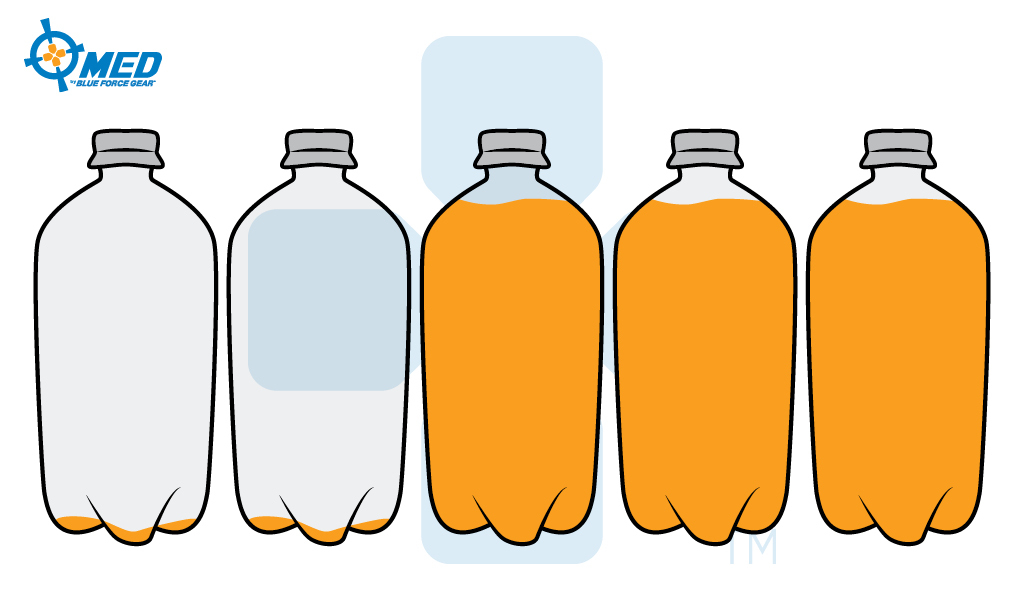
3.0 LITERS OF BLOOD – 2.0L DOWN (40%) – TREAT THE PATIENT AGGRESSIVELY
2.5 LITERS OF BLOOD – Half of the patient’s blood has been lost.
Something has gone seriously sideways. The patient is now entering the realm of what is called Decompensated Shock. Medical professionals also call this “circling the drain” and you can guess from that what is happening. This patient will be unconscious with a pulse rate in excess of 140, low blood pressure and rapid breathing in excess of 35 breaths a minute. Patients have lived through this much blood loss but time to definitive care, quality of surgical intervention, patient condition and a whole bunch of other stars have to align. Your job is to not let them get to this situation through rapid application of bleeding control techniques.

2.5 LITERS OF BLOOD – 2.5L DOWN (50%) – NOT GOOD
HOMEWORK ASSIGNMENT – This entire discussion has been academic and the photos are nice but what I would ask you to do at this point is grab a water bottle or two and go outside. Pour out 0.5, 1.0, 1.5 and 2.0 liters of water on the ground. Do it on a hard surface and then on grass or dirt. Get a look at what that amount of fluid looks like. All the better if you have some food coloring to throw in there just for the visual. I have done this exercise hundreds of times for new recruits and seasoned medics. Everyone always agrees that it is a worthwhile endeavor. Personally, the most amazing thing is that you can lose two liters of blood and survive.
TL;DR:
- Blood loss is bad, you have 5.0 liters to work with
- 0.5 liter loss – no big deal
- 1.0 liter loss – scary but not a big deal in reality
- 1.5 liter loss – cardio will save you
- 2.0 liter loss – this is survivable but rapid transport is important
- 2.5 liter loss – potentially survivable but not likely, don’t get to this point
- Be aggressive in your bleeding control methods, lay the patient down, keep them warm, get them to definitive care via rapid transport, always double and triple check your bleeding interventions every time you move the patient and periodically otherwise
Recommended to have to Stop Blood Loss

Micro Trauma Kit NOW!™ - PRO Fill Kit
Designed primarily for First Responders, the PRO version is equipped to treat life threatening bleeding and hypothermia while bridging the time gap between injury and arrival of advanced medical providers. Paired with a tourniquet, the PRO kit allows for treatment of extremity and junctional bleeding with a minimal amount of training...

SWAT-T Tourniquet
The SWAT T is being utilized in BFG med kits as a PRESSURE DEVICE and not as a primary tourniquet. While it can be utilized as a tourniquet, we recommend the CAT or SOFTT-W as a primary tourniquet for their ability to be self applied.
Hemostatic Dressings
QuikClot is an easy to use bandage dressing that contains hemostatic agent that assists in clotting to reduce blood loss in major hemorrhaging injuries.
Pressure Dressing
Pressure dressings are designed to aid in stopping bleeding, after the use of a tourniquet or wound packing, and also to protect the wound from external contamination.
Trauma Gloves
Trauma Gloves, Nitrile gloves are a staple of any first aid or trauma kit. As the easiest way to prevent the transmission of blood borne diseases, bacteria, viral infections, or other dangers from coming in contact with bodily fluids – anyone serious about medical aid should have several pairs of gloves for your protection or anyone else that may assist in medical attention.
Adequate training should be completed from a licensed professional before performing any first aid discussed in this article. This is not medical advice. *Banner Photo Courtesy of Department of Defense. The appearance of U.S. Department of Defense (DoD) visual information does not imply or constitute DoD endorsement.

